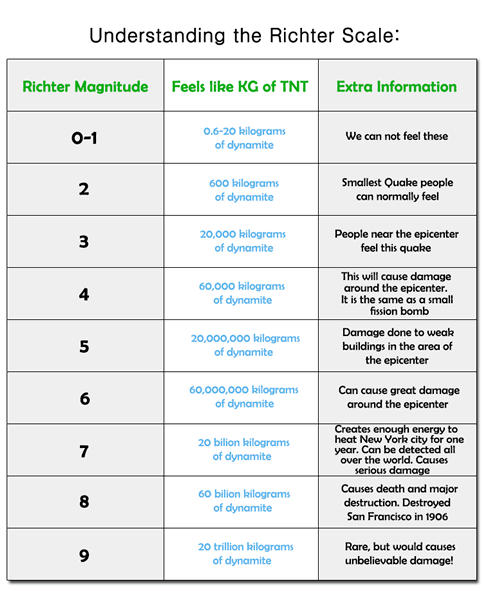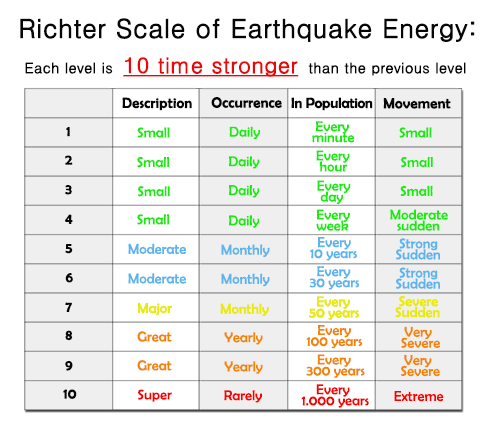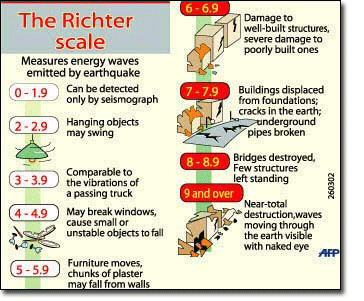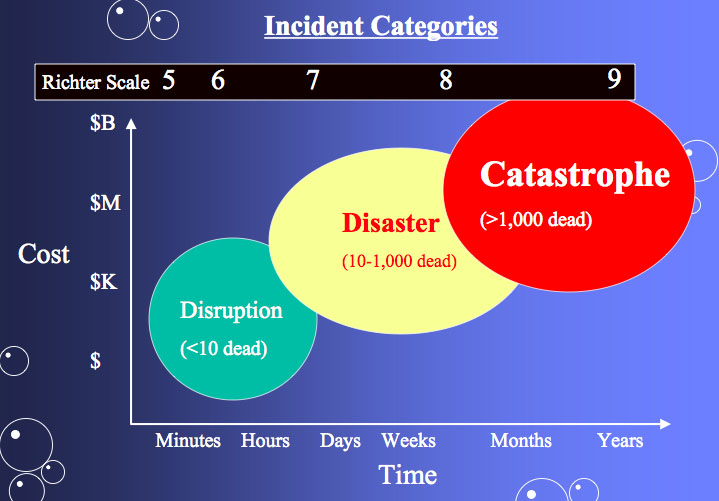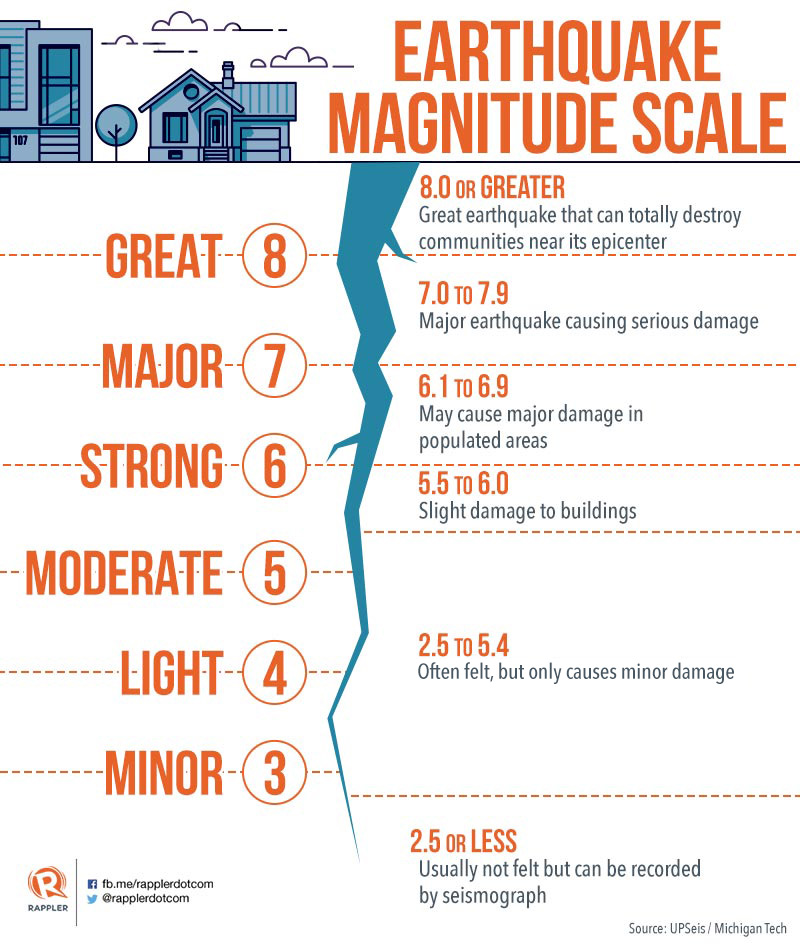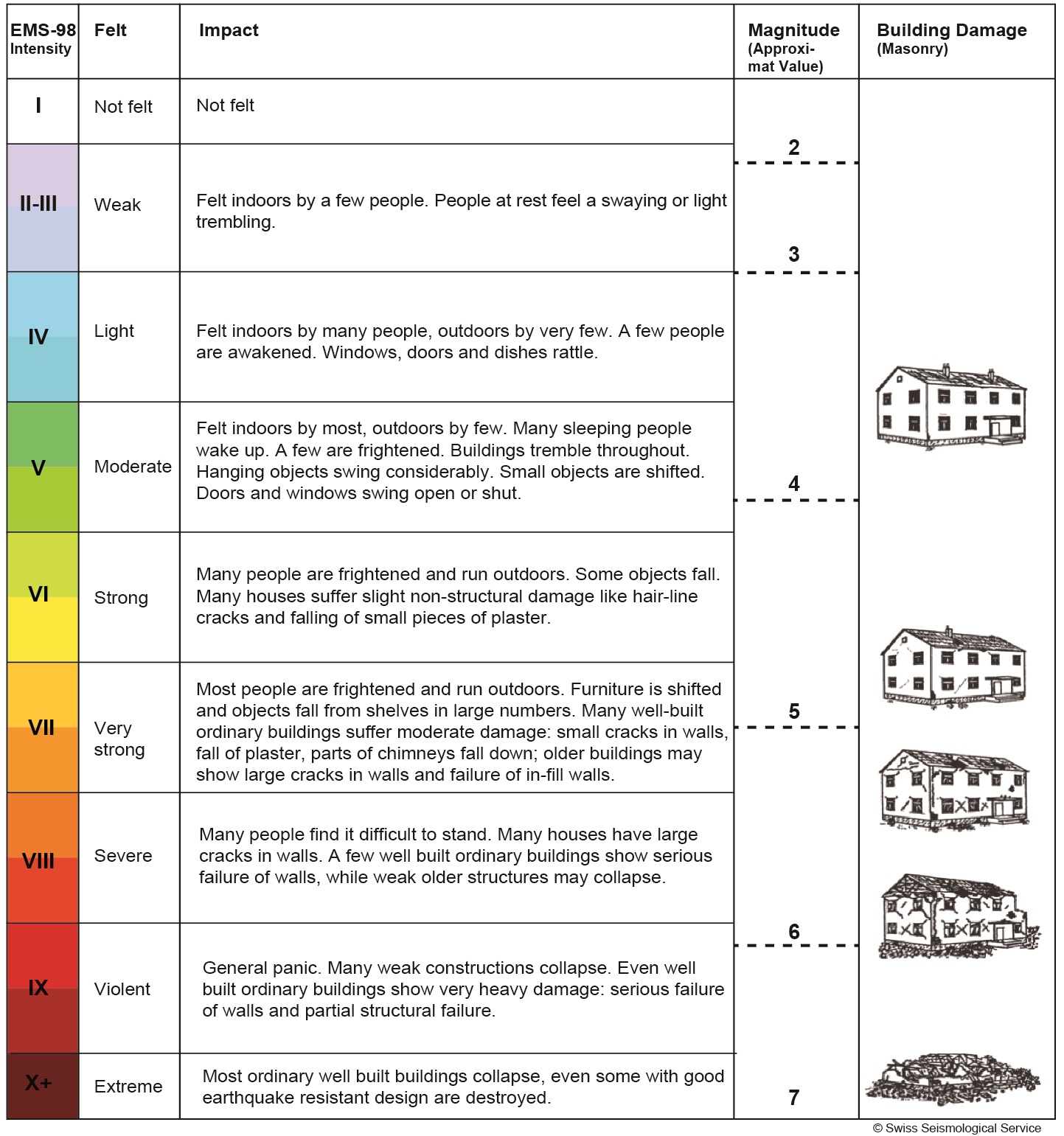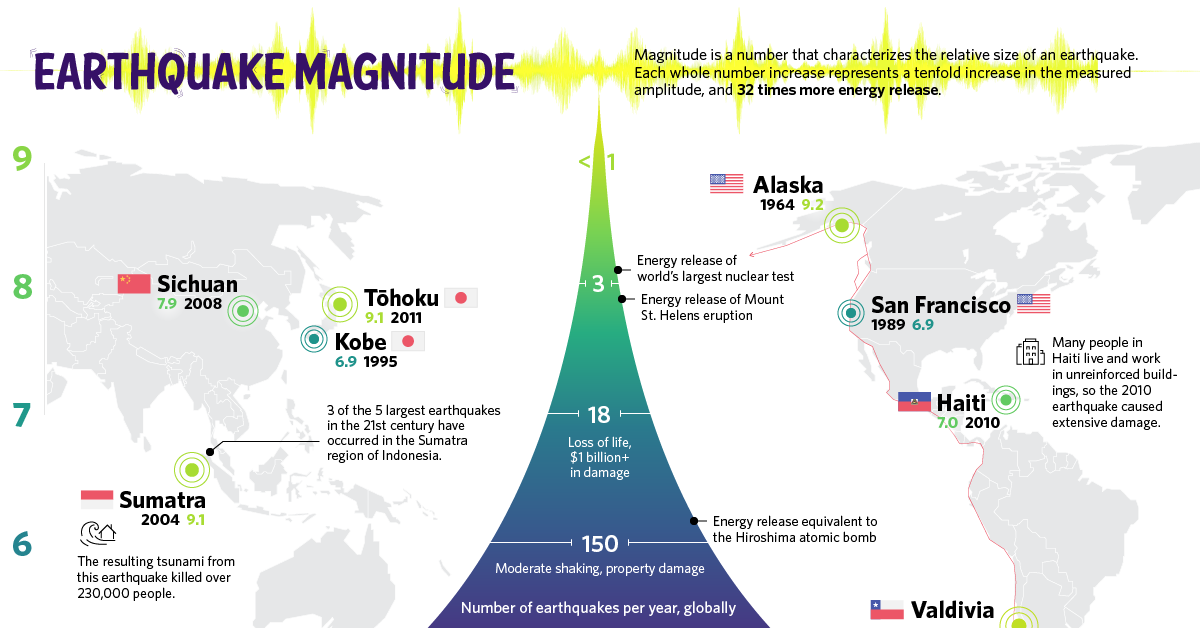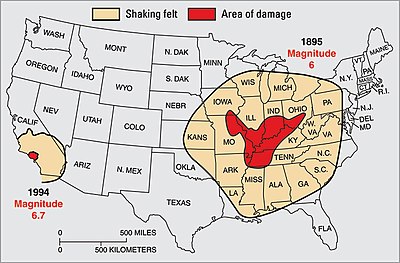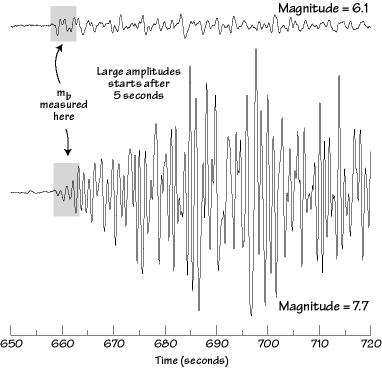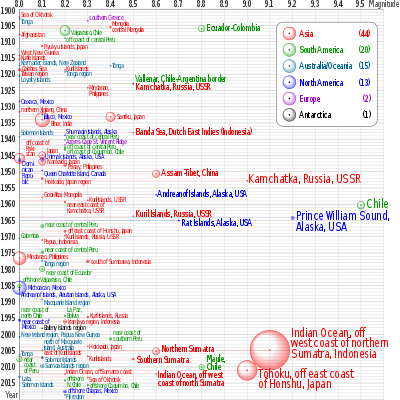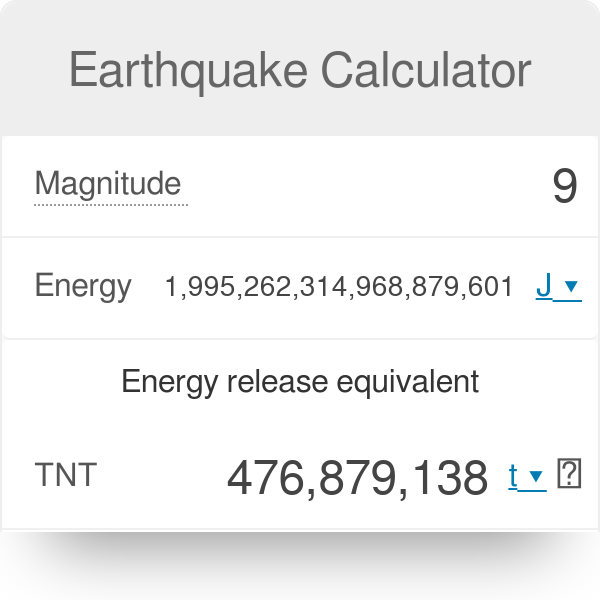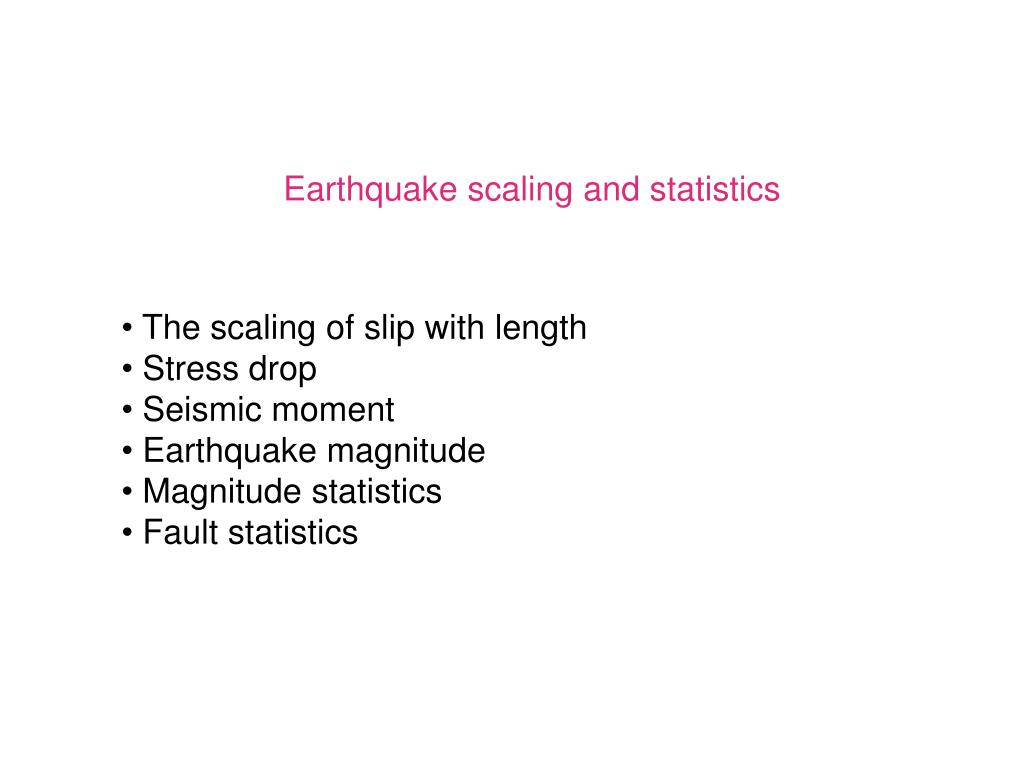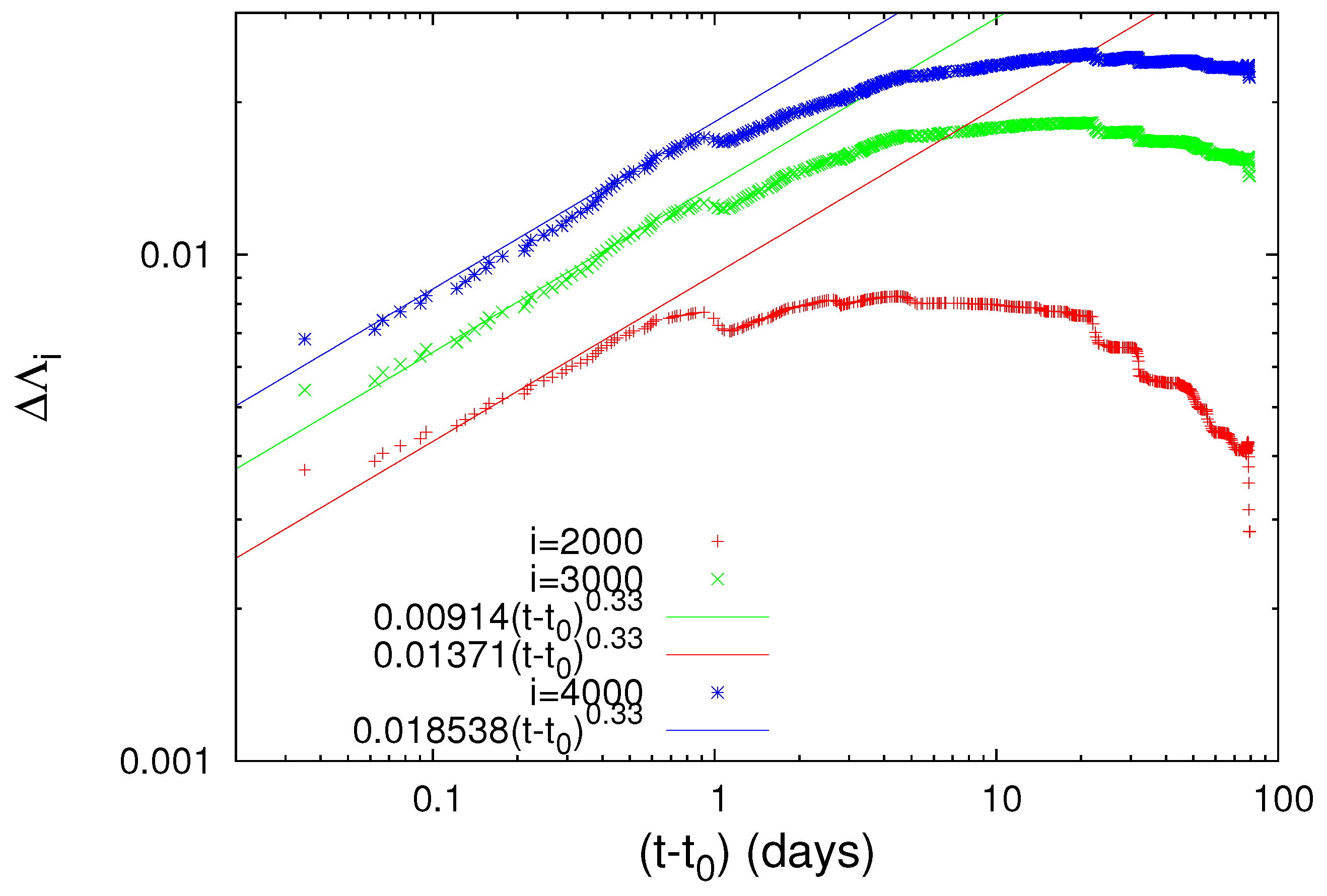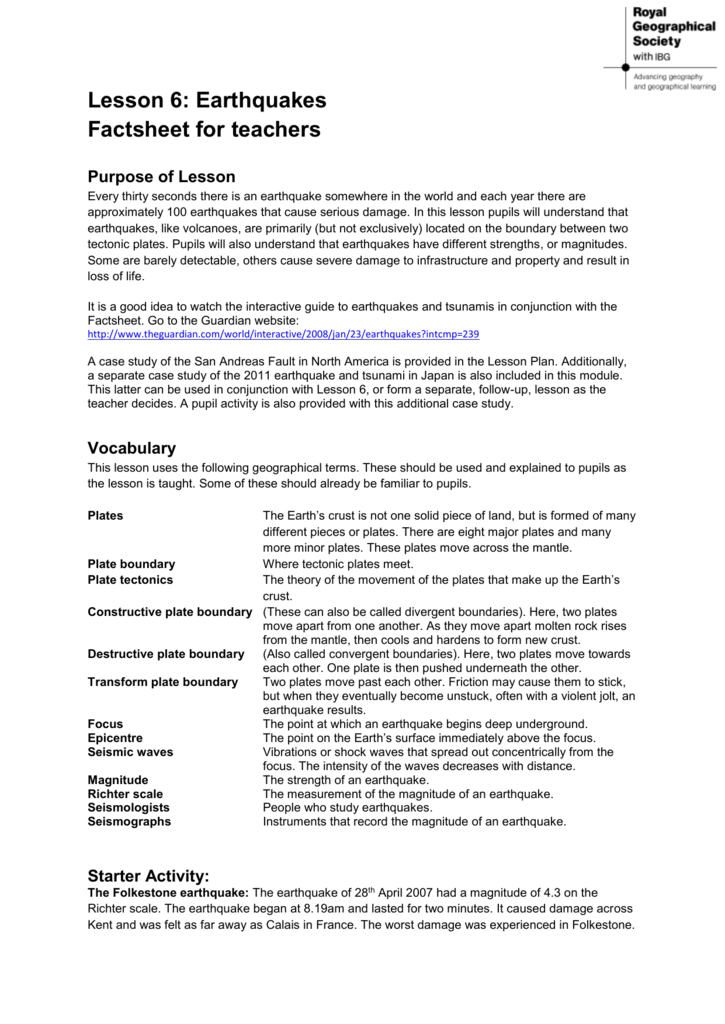Earthquake Scale Explained

Therefore an earthquake with 6 on the richter scale is 10 times greater than an earthquake with 5 on the same.
Earthquake scale explained. Let us look at a few facts about earthquakes and their numbers on the richter scale. This was later revised and renamed the local magnitude scale denoted as ml or m l. Moment magnitude is more effective for large earthquakes moment magnitude uses more variables to calculate the energy released using seismic moment.
The magnitude of an earthquake is calculated by using the richter scale formula which is mentioned and explained in brief in the following article. Richter and presented in his landmark 1935 paper where he called it the magnitude scale. Seismic moment combines the seismic energy with offset on the fault and rigidity of rock.
The richter scale is logarithmic meaning that whole number jumps indicate a tenfold increase in this case the increase is in wave amplitude. The richter scale also called the richter magnitude scale or richter s magnitude scale is a measure of the strength of earthquakes developed by charles f. Because of various shortcomings of the m l scale most.
That is the wave amplitude in a level 6 earthquake is 10 times greater than in a level 5 earthquake and the amplitude increases 100 times between a level 7 earthquake and a level 9 earthquake. Therefore the increase in intensity between an earthquake of 5 and 7 on the richter scale is 100 times. Richter magnitude scale explained.
An earthquake of magnitude 6 or higher is considered major.

